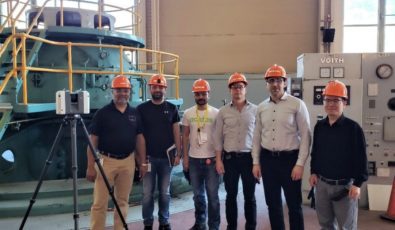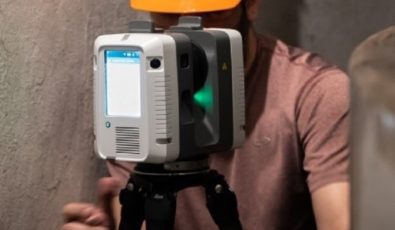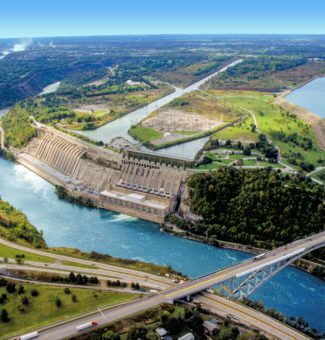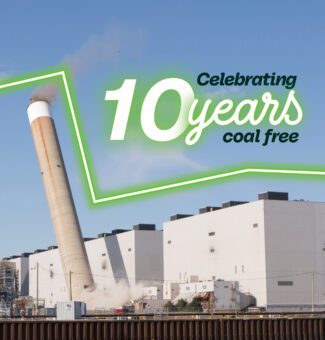OPG hydro stations get the 3D treatment
Several OPG hydropower stations have stepped into the world of 3D laser scanning and modelling, with impressive results.

The facilities, which include Sir Adam Beck 1 Generating Station (GS), Otter Rapids GS, Manitou Falls GS, Ear Falls GS, and Healey Falls GS, recently got some valuable face-time with a 3D camera that captured millimetre-accurate views of the stations. The project is a collaboration between the Darlington Plant Design Engineering Drawing Office and OPG’s Renewable Generation division.
The resulting images are helping to increase efficiency across the company, decreasing costs and improving work planning processes.
“This innovative 3D technology has already improved the accuracy of many engineering, operations and maintenance projects,” said Martin Vanderheyden, a Section Manager in Nuclear Engineering who works in the Darlington drawing office. “It has also reduced costs for station equipment installations and increased planning efficiencies.”
Here’s how the technology works.
"This innovative 3D technology has already improved the accuracy of many engineering, operations and maintenance projects.”Martin Vanderheyden, Section Manager in Nuclear Engineering
The 3D laser scanning team uses a Leica RTC360 3D Laser Scanner, a camera that is fast, precise, and small enough to fit in most backpacks. The impressive scanner can capture two million points per second, resulting in crisp, high-quality scans rich in detail and ready for use in a range of applications.

From a single point, the team uses the camera to “paint” the inside of a station with lasers, capturing measurable data points along the way.
The team then moves the camera and scans again – and again and again. Millions of data points are collected over days (sometimes weeks). After hundreds of scans and millions of measurable data points are collected, the work on the ground is complete.
Next, the 3D laser scanning team takes the scans back to the Darlington drawing office and gets to work compiling the data using specialized software. High-performance computers take the hundreds of scans, and millions of data points, to transform the data into complete three-dimensional images and “fly-thru” renderings – a 3D laser scan which is accurate to less than a millimetre.
In addition to aiding with planning, the renderings have helped overcome some logistical challenges as well. As many of OPG’s hydro stations are located in distant parts of the province, this technology allows OPG employees to take “virtual tours” of the plants to familiarize themselves and gather accurate measurements and other data remotely.
Subscribe and stay informed
Sign up to receive the latest news, project updates, and event information from OPG.


